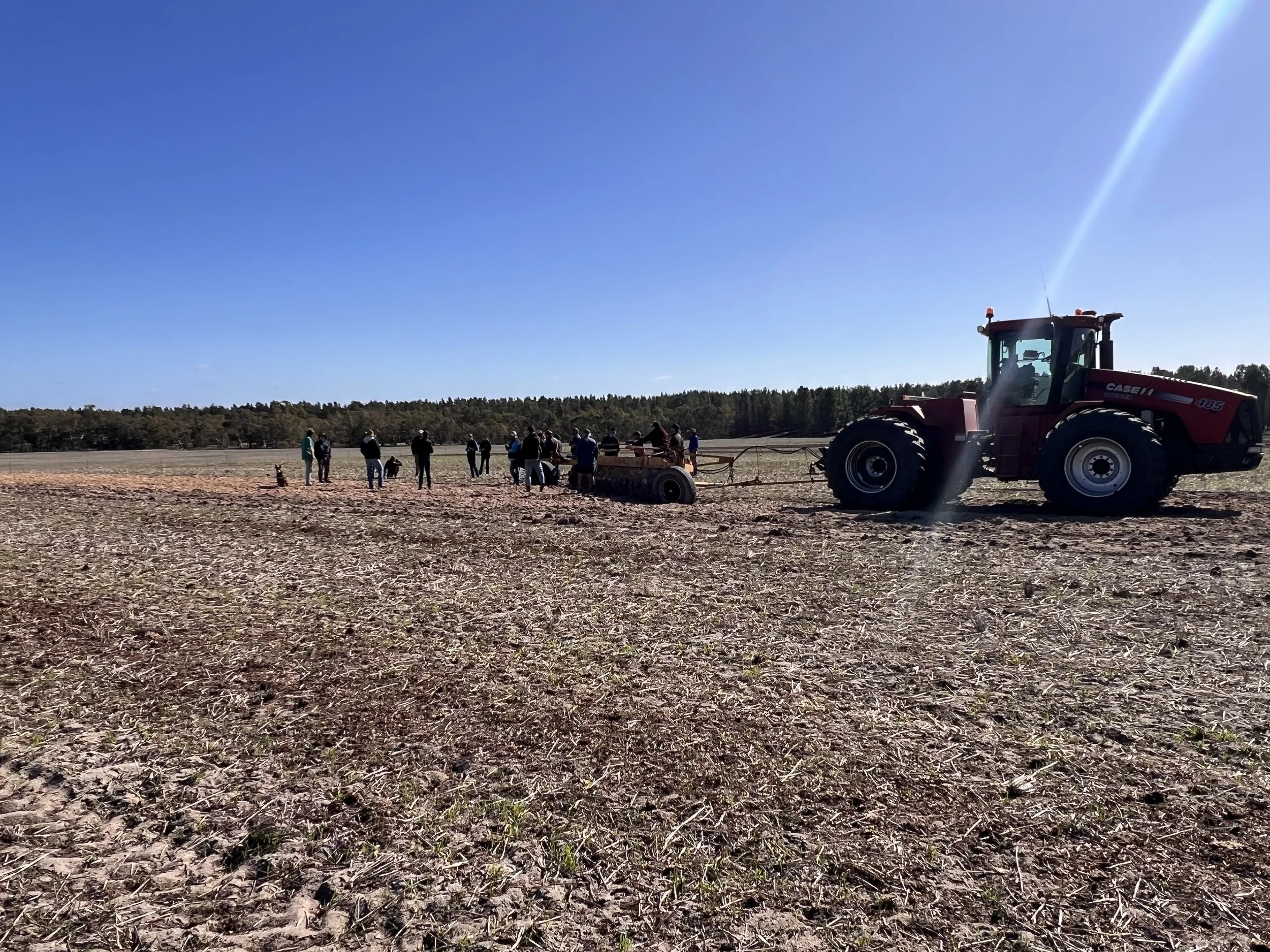Cutting Through the Noise on Farming and Emissions
It’s no secret that agriculture plays a role in climate change—methane, nitrous oxide, and carbon dioxide all emerge from everyday activities like livestock production, fertiliser use and machinery. But what’s a landholder actually supposed to do about it?
The Carbon Outreach Program is industry-led to provide unbiased, independent information about carbon farming to farmers and agricultural advisors. There’s no sales pitch: instead, the focus is on helping farmers make informed decisions about measuring and managing carbon emissions on their properties.
Wheatbelt NRM partnered with Perth NRM, MADFIG, and Campfire Agri Training and Coaching to host a Carbon Farming in the Wheatbelt Workshop in March at the York CRC. Here’s the cliff-notes version from our Sustainable Agriculture team.
The workshop began with a brief overview of how we’ve arrived at the current landscape, including the implications of Australia’s Net Zero by 2050 policies. These policies affect government, supply chains, and primary producers alike.
The main greenhouse gases (carbon dioxide, nitrous oxide, and methane) are all produced through various agricultural activities, contributing to climate change. But what does this mean for landholders?
Farmers have two primary options:
1. Sequestration: Storing carbon in the landscape; and
2. Avoiding or limiting emissions: Reducing greenhouse gases produced.
Sequestration is achieved through projects under the Australian Carbon Credit Unit (ACCU) scheme, which aims to encourage emission reductions or carbon storage by:
· Adopting new technologies
· Upgrading equipment
· Improving business practices for productivity or energy efficiency
· Changing how vegetation is managed in the landscape
One ACCU represents one tonne of CO₂ equivalent that would otherwise have been released into the atmosphere but has been avoided or stored through these methods.
However, strict rules apply. You cannot claim ACCUs if:
· The activity is “business as usual.”
· The activity was done in the past (no retrospective claims).
· The activity is required by law.
· The activity does not follow an approved method.
You must also:
· Have the legal right to carry out the activities on your land.
· Have the legal right to be issued ACCUs from the project.
· Undergo a “fit and proper person” assessment, considering:
o Any convictions for certain offences
o Breaches of other government schemes
o Whether you have the skills, capability, sound business practices, integrity, and good character to run such projects
Carbon sequestration projects must also ensure permanence, meaning carbon must remain stored for either a minimum of 25 years or 100 years, depending on the chosen method. Strict rules govern eligible activities and compliance.
Even if you don’t plan to enter the ACCU market, understanding carbon farming is increasingly relevant. Carbon “insets” and “offsets” are becoming more common:
· An inset is an activity you undertake on-farm to reduce greenhouse gas emissions from your own farm business and its supply chain.
· An offset involves actions credited to an external organisation for emission reductions achieved on your farm or in your supply chain. For example, a grain buyer might pay you to shift from conventional tillage to minimum tillage, reducing greenhouse gas emissions across the supply chain.
Why does the supply chain matter?
During the workshop, participants completed an engaging exercise. Groups were each given a picture of a common product, like a roast chicken, and tasked with estimating its emissions intensity (total carbon emissions relative to the product’s output). Groups then lined up from the highest to the lowest emissions intensity. The exercise was eye-opening, highlighting the significant greenhouse gas emissions embedded throughout the supply chain.
To participate effectively in emissions reduction markets, farmers need to “know their number”—that is, the emissions intensity (EI) of their products.
The workshop covered several tools—ranging from free options to those costing up to $600 per year—that help calculate emissions intensity, including:
· Greenhouse Accounting Framework
· MLA Calculator
· Environmental Accounting Platform
· Cool Farm Tools
· Ruminati - Agricultural Emissions Tracking
· FullCAM
Calculating emissions intensity for crops, for example, requires data such as:
· Crop type
· Area grown
· Harvested yield
· Annual rainfall
· Evapotranspiration rates
· Fertiliser types and rates
· Chemical usage
· Lime and gypsum applications
· Fuel consumption
· Transport costs
· Power usage
· Burning practices
· Land use changes
· Vegetation offsets
· Soil characteristics
Whats the bottom line? Carbon’s not going away, so the more you understand it, the more control you have over your land’s future.
To find out more about Carbon options on your property or find a Carbon Farming Outreach Program workshop near you, email Jacquie Lucas or call our offices at 08 9670 3100.
Subscribe to our e-newsletter and keep up to date on current events, partnership opportunities, and NRM in the Wheatbelt.
Published eNews #405, August 2025

